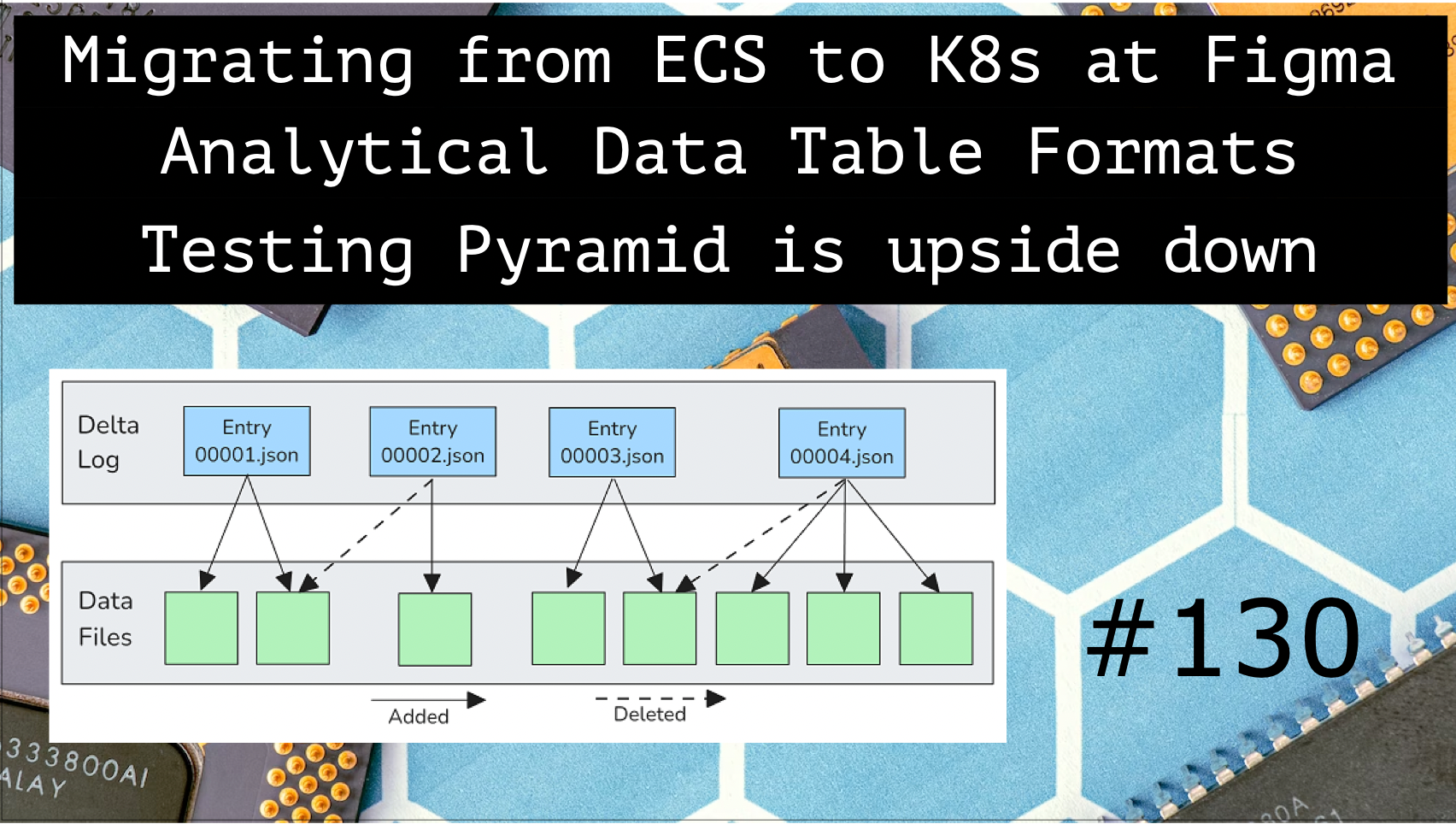Architecture Weekly Issue #130. Articles, books, and playlists on architecture and related topics. Split by sections, highlighted with complexity: 🤟 means hardcore, 👷♂️ is technically applicable right away, 🍼 - is an introduction to the topic or an overview. Now in telegram and Substack as well.
Highlights
Migrating from ECS onto K8s in less than a year at Figma 👷♂️
Figma was already running their payload in containers a year ago using ECS, but realized they are missing several crucial points of functionality like autoscaling, stateful storage and others. They decided to migrate to Kubernetes, but it's a challenging task at Figma's scale. Find out more details in their engineering blog, though no numberf unfortunately.

#k8s #casestudy
Analytical Table Format comparisons 🤟
OLAP is still a pretty unmapped territory for myself, that's why it's so interesting to figure out what are the storage formats for analytical databases are and how they are compared with each other. Jack Vanlightly compares 4 formats: DeltaLake, Apache Iceberg, Hudi and Paimon and draws comprehensive diagrams!

#bigdata #db
The Testing Pyramid is upside-down 🍼
The classical testing pyramid suggests having tons of unit tests and a few of end-2-end ones, and people follow it because writing unit tests is much cheaper, yet, are they that useful? Probably, the modern software complexity require to flip the pyramid upside down and put the emphasis on e2e tests first. Find the considerations in the articlce.

#quality
Follow-Up
Kebab vs Cake organization 🍼
At Bolt the teams are named after the customer journeys like Rider Experience Team, or Eater Experience Team. This is a sign that we have a so-called Cake organization. The opposite to that is a Kebab organization, where each team handles the piece of the functionality. Alex Ewerlöf analysies both approaches and lists pros and cons for both. Team Topologies, Leacky abstractions - all of that impacts the organizational structure in the end

#ea
QA slows work down 🍼
You might have heard, that QA activities slow things down but it's quite the opposite: actually not applying proper quality control measures will slow you down as you will to make tons of rework. Vitaly Sharovatov tackles the issue in the Qase blog.

#qa
DynamoDB Backup & Restore 👷♂️
Serverless products are great, because they manage the operational work for you, providing scalability and reliability. But that does not mean everything is just available for you out of the box - even for serverless storages like DynamoDB you need to configure backups. Check out the options you have.

#db #serverless
The long way towards resilience - Part 1 🍼
Uwe Friedrichsen starts a new series in his blog - this time about building resilient systems. He starts with the corner-stone point: what is the resilience in the first place? And no, just being able for a software system to work for a long time is not resilience.

#resilience
Long-running processes in Modern Architectures 👷♂️
When I was working for a bank, we dealt with making a credit score for businesses. The process was long-running and multistep, requiring waiting, retries and persisting state. That's why I liked this article in InfoQ blocked, mentioning BPMN and all those long-running tactics.

#architecture
WARNING 🇺🇦
The brutal and unjustified war against Ukraine continues already 2 years. If you want to help Ukraine directly visit this fund.
Big thanks to Nikita, Constantin, Anatoly, Oleksandr, Dima, Pavel B, Pavel, Robert, Roman, Iyri, Andrey, Lidia, Vladimir, August, Roman, Egor, Roman, Evgeniy, Nadia, Daria, Dzmitry, Mikhail, Nikita, Dmytro, Denis and Mikhail for supporting the newsletter. They receive early access to the articles, influence the content and participate in the closed group where we discuss the architecture problems. Join them at Patreon or Boosty!









